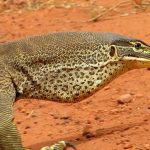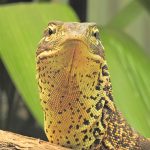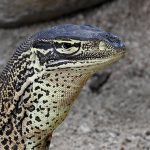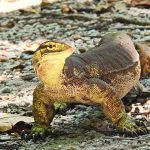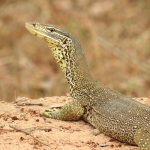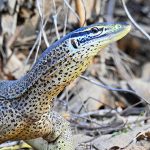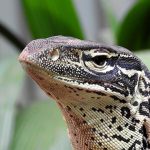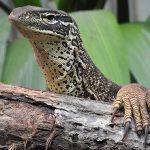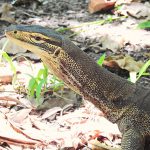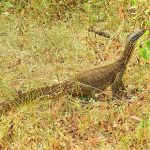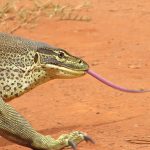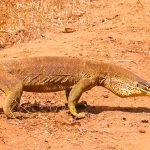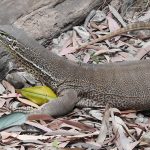YELLOW-SPOTTED MONITOR
The Yellow-Spotted Monitor: Guardian of the Outback
Imagine traversing the golden grasslands of northern Australia, the air shimmering with heat and the scent of sun-warmed earth rising around you. Suddenly, through the dappled shadows, a striking figure moves—muscular, alert, adorned with a constellation of yellow spots. This is the Yellow-spotted monitor, a remarkable lizard that is both a symbol of resilience and a master of its wild domain.
Physical Description
The Yellow-spotted monitor is a formidable reptile, often reaching up to 140 centimetres in length from snout to tail. Its body is robust, with rippling muscles beneath a skin patterned by bold yellow or cream spots and stripes, set against a deep brown or black background. This pattern is not just decorative—it provides excellent camouflage among grasses, fallen leaves, and patches of sun and shadow.
- Length: Up to 140 cm
- Colouration: Yellow/cream spots and stripes on dark skin
- Build: Strong, agile, and muscular
When you see one in the wild, you might notice how the sunlight dances across its scales, making the yellow spots almost glow. If you listen closely, you might even hear the soft rustle of dry grass as it moves, each step deliberate and powerful.
Habitat and Distribution
The Yellow-spotted monitor is a true survivor, making its home in a variety of environments:
| Habitat Type | Description |
|---|---|
| Woodlands | Scattered trees, dappled sunlight, rich leaf litter |
| Grasslands | Tall grasses, open spaces, sun-kissed earth |
| Savannas | Mixed shrubs, seasonal rains, shifting shade |
| Desert Edges | Sparse vegetation, rugged terrain, arid climate |
This adaptability allows the monitor to thrive across northern Australia, from the lush savannas of Queensland to the red sands bordering the Northern Territory.
Behaviour and Diet
Solitary Hunters
The Yellow-spotted monitor is diurnal, meaning it is most active during the warmth of the day. You might spot one basking on a sun-baked log, absorbing heat to fuel its next hunt. These lizards are solitary by nature, coming together only during the breeding season.
Apex Predator
Equipped with sharp claws and a powerful jaw, the Yellow-spotted monitor is a skilled predator. Its diet is varied, including:
- Insects (beetles, grasshoppers)
- Small reptiles
- Mammals (rodents)
- Birds and their eggs
Its keen senses and lightning-quick reflexes make it a top predator in its environment, maintaining balance by controlling populations of other animals.
Intelligence and Curiosity
Monitors are among the most intelligent reptiles. The Yellow-spotted monitor demonstrates remarkable problem-solving skills—whether it’s unearthing hidden prey, navigating complex terrain, or investigating new objects in its territory. Their alert eyes and curious flicks of the tongue show a continual awareness of their surroundings.
Conservation and Significance
While not currently endangered, the Yellow-spotted monitor faces challenges such as habitat loss and competition with invasive species. Healthy, connected ecosystems are vital for their continued survival.
Conservation Tip:
By supporting habitat protection and discouraging the spread of invasive animals, we help ensure that these monitors—and the ecosystems they support—remain vibrant for generations to come.
Conclusion
The Yellow-spotted monitor is much more than a striking reptile—it is a keystone species in the Australian landscape. Its presence is a testament to the wild beauty and complexity of the continent’s natural heritage. By learning about and cherishing creatures like the Yellow-spotted monitor, we nurture our connection to nature and strengthen our resolve to protect it.
Let us walk gently through the wild places, remembering that every footprint leaves a mark and every life, no matter how scaled or spotted, has a story worth preserving.

